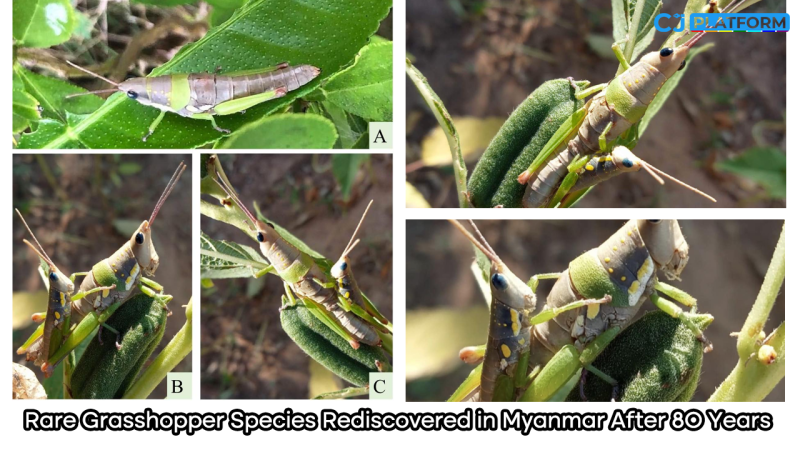Rare Grasshopper Species Rediscovered in Myanmar After 80 Years

In a remarkable turn of events that underscores the rich biodiversity of Myanmar, a group of young researchers from the Native Species Conservation and Identification in Myanmar (NSCI) has made a groundbreaking discovery.
A rare grasshopper species, Burmorthacris subaptera Kevan, thought to be extinct for over eight decades, has been rediscovered in the heart of Myanmar’s tropical rainforests. This significant finding was recently published in the Zoological Journal by Magnolia Press, drawing international attention to the region’s unique ecological value.
The grasshopper, initially documented by explorers in 1937, has not been observed since. Its rediscovery by residents in 2022 has thrilled the scientific community. “We haven’t seen any of these species since 1937,” Win Paing Oo, the head of NSCI, told CJ Platform media, highlighting the rarity of such discoveries in today’s well-explored world.
Characterized by distinctive small yellow spots on its neck and a unique green circle on its back, the Burmorthacris subaptera Kevan stands out from its counterparts. Its presence in the drought-prone areas of central Myanmar and its vibrant coloration align it with the Pyrgomorphidae family, known for their conspicuous appearances.
The discovery was a collaborative effort, led by NSCI’s Ma Zun Wit Hmone, with contributions from local analysts Ma Malar Kyaw, Ma Cho Thandar, and a Thai anthropologist. This teamwork highlights the importance of local knowledge and international cooperation in uncovering the mysteries of biodiversity.
“This rediscovery highlights the critical need for conservation and further research in Myanmar’s ecosystems,” said Ma Zun Wit Hmone. She emphasized the role of citizen science and local engagement in bringing to light species thought to be lost to history.
The NSCI’s work sheds light on the challenges and opportunities in the field of conservation science in Myanmar. “It’s very rare for a researcher to study this field,” Ko Win Paing Oo remarked, pointing out the scarcity of insect research in the country and calling for more attention to this overlooked area.
As Myanmar continues to reveal its hidden natural treasures, this discovery serves as a reminder of the world’s vast, untapped biodiversity. It highlights the importance of preserving natural habitats and supports the argument for increased research funding and conservation efforts in regions rich in unique species.
The international scientific community is now keenly watching Myanmar, hopeful that this discovery is just the beginning of a series of revelations that will deepen our understanding of global biodiversity. The NSCI’s success is a testament to the enduring spirit of curiosity and collaboration that drives the world of conservation science forward.

